When planning a trip to China, the Great Wall consistently tops travelers’ itineraries. Regarded as a once-in-a-lifetime landmark, it weaves together history, engineering, and natural beauty in a way few sites can match. Below are the top 8 reasons to add it to your journey:
1. A Walk through 2,000+ Years of History
The Great Wall’s construction spanned more than two millennia, from the Spring and Autumn Period (770 - 476 BC) to the
Qing Dynasty (1644 - 1911 AD), encompassing over 20 dynasties. Each era left its mark: varying materials from earth to brick and stone, wall heights, and battlement designs reflect the technologies and needs of the time. To tread its paths and touch its weathered masonry is not merely sightseeing - it is to flip through the pages of China’s vivid, living history.
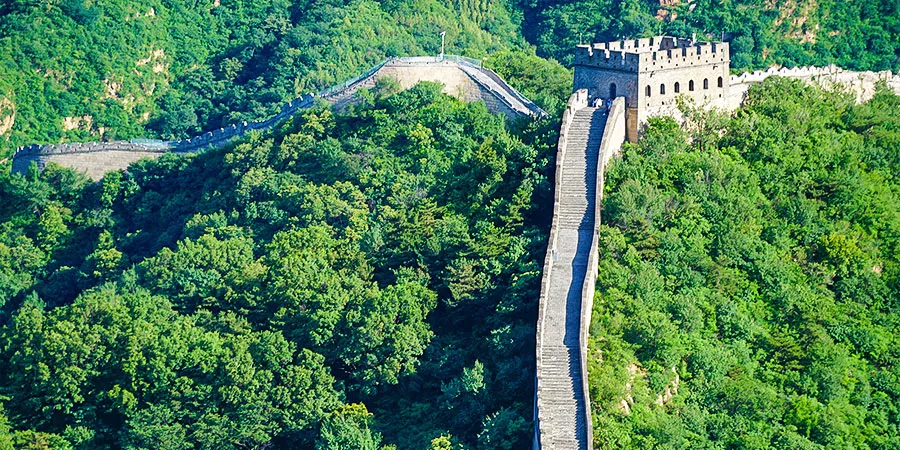 |
| The historic Great Wall |
See more about
History of the Great Wall of China 2. Breathtaking Natural Scenery
The Great Wall’s route was masterfully chosen to wind through China’s most diverse landscapes, adjacent to lush greenery, rugged mountain peaks, and vast deserts alike. Its beauty shifts with the seasons: spring paints
Badaling in a sea of pink blossoms, while autumn cloaks
Mutianyu in fiery maple hues. Here, nature’s grandeur and the wall’s imposing structure merge seamlessly, creating an unforgettable visual feast.
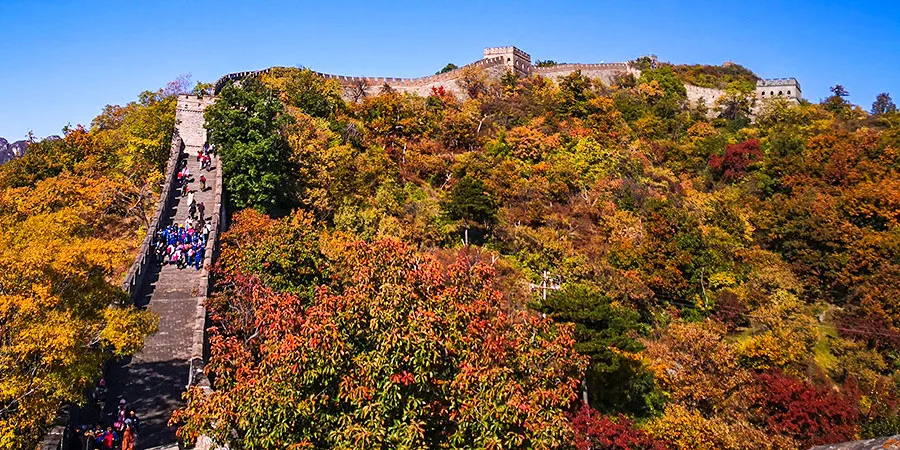 |
| Great Wall in Colorful Autumn |
3. One of the World’s Greatest Architectural Marvels
Undoubtedly a pinnacle of human engineering, the Great Wall’s scale and construction difficulty are unparalleled in world architectural history. Stretching over 21,000 kilometers (13,000 miles), it holds the title of the longest wall on Earth. What makes it even more extraordinary? Ancient craftsmen built it without modern machinery, transporting bricks and stones weighing tens or even hundreds of pounds to mountain summits to create a structure of remarkable sturdiness. To adapt to varied terrain, builders also tailored the wall’s slope and width to the land’s natural contours, a feat of ingenuity that remains awe-inspiring over 2,000 years later.
More to see:
How long is the Great Wall of China? 4. China’s Unrivaled No. 1 Tourist Attraction
As a global symbol of China, the Great Wall is the country’s most visited landmark, drawing tens of millions of domestic and international travelers annually. Statistics speak for themselves: Badaling alone welcomes over 10 million visitors each year, while Mutianyu sees more than 3 million. What’s more, over 90% of first-time foreign tourists to China include the Great Wall in their plans. These figures clearly demonstrate the Great Wall's significant status in the hearts of tourists and its strong appeal as a tourist destination.
5. A Celebrated UNESCO World Cultural Heritage
Since 1987, the Great Wall has held a place on UNESCO’s World Heritage List, a recognition of its unparalleled value to global culture. In its evaluation, UNESCO hailed it as “one of humanity’s greatest architectural achievements”, a masterpiece that embodies ancient Chinese civilization while enriching the world’s cultural tapestry. Its significance spans military, cultural, and artistic realms, making it a heritage site for all humanity.
6. Diverse Experiences for Every Traveler
The Great Wall caters to all types of travelers, whether you seek relaxation or adventure. For a leisurely visit, take a cable car to the top and soak in the panoramic views without exertion. Adventure seekers can hike lesser-developed “wild” sections, where untouched masonry and quiet trails offer a more immersive experience. Beyond that, some sections offer unique activities like night tours and downhill slides, adding fun to your exploration.
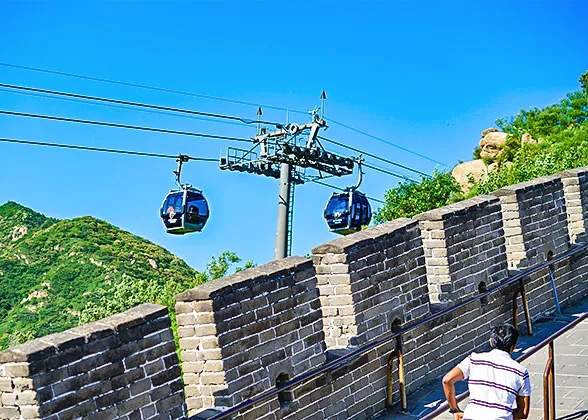 | | Overlooking the Great Wall from the cable car | |  | | Hiking on the Great Wall | |
7. Reaching the Top of the Great Wall Symbolizes Self-Conquest
Most of the Great Wall is built on steep mountains and rugged hills, so climbing it means overcoming steep slopes, long distances, and physical fatigue. Take Badaling, for example: reaching its summit requires climbing over 1,300 steps, with some sections so steep they test your stamina. But when you finally stand at the top, powered by your own perseverance, and gaze down at the sweeping views below, the sense of pride and accomplishment is indescribable. For many, reaching the Great Wall’s peak is more than a tourist highlight; it’s a metaphor for conquering yourself.
 |
| Successfully climbed to the top of the Great Wall |
8. Insight into Ancient Chinese Military Defense Engineering
The Great Wall is far more than a wall - it is a sophisticated, integrated ancient military defense system. A visit offers a front-row seat to learn China’s historical military ingenuity. Its components, from the wall itself and watchtowers to beacon towers and passes, each served a unique strategic purpose. By exploring these elements, travelers can visualize how ancient military leaders designed defenses, and gain a deep appreciation for the tactics and wisdom that protected dynasties for centuries.
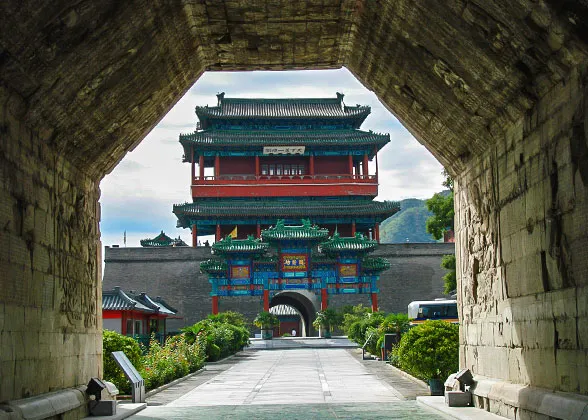 | | Majestic pass along the Great Wall | | 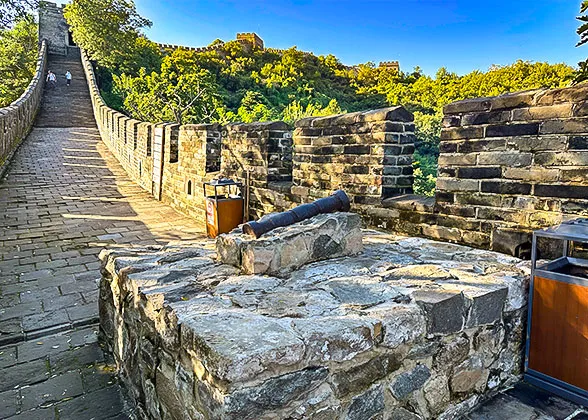 | | Weapons on the Great Wall | |
You may like:
Military Defense System of China Great Wall How to Visit the Great Wall of China
How to Visit the Great Wall of China
 Which Part of Great Wall of China to Visit
Which Part of Great Wall of China to Visit
 Best Time to Visit Great Wall of China
Best Time to Visit Great Wall of China
 How much does it cost to visit the Great Wall of China?
How much does it cost to visit the Great Wall of China?
 Great Wall Travel
Great Wall Travel
 8 Guidelines for Travel to Great Wall of China in Winter
8 Guidelines for Travel to Great Wall of China in Winter
 Camping on the Great Wall of China
Camping on the Great Wall of China
- Last updated on Oct. 22, 2025 by Sherry Xia -



![]() How to Visit the Great Wall of China
How to Visit the Great Wall of China![]() Which Part of Great Wall of China to Visit
Which Part of Great Wall of China to Visit![]() Best Time to Visit Great Wall of China
Best Time to Visit Great Wall of China![]() How much does it cost to visit the Great Wall of China?
How much does it cost to visit the Great Wall of China? ![]() 8 Guidelines for Travel to Great Wall of China in Winter
8 Guidelines for Travel to Great Wall of China in Winter![]() Camping on the Great Wall of China
Camping on the Great Wall of China






